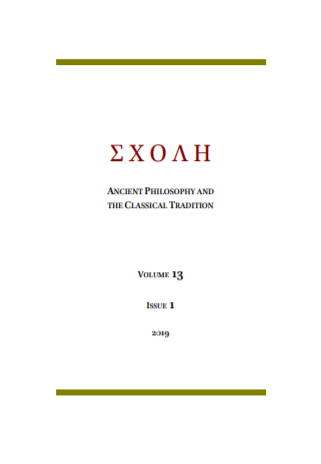Строение пространства в «Географии» Птолемея: методологические сложности геореференцирования античных топонимов
The Structure of Space in Ptolemy’s Geography: Methodological Challenges in Georeferencing Ancient Toponyms
Author(s): Dmitry A. ShcheglovSubject(s): Applied Geography, Maps / Cartography, Ancient Philosphy, Methodology and research technology
Published by: Новосибирский государственный университет
Keywords: ancient geography; ancient cartography; Claudius Ptolemy; Ptolemy’s Geography; Ptolemy’s map; periploi; Periplus of the Pontus Exinus; Pseudo-Arrian; Stadiasmus of the Great Sea; Roman itineraries;
Summary/Abstract: In this paper I would like to draw attention to several features inherent to Ptolemy’s Geography that limit the effectiveness of different mathematical approaches to georeferencing (i.e. locating within the modern coordinate system) its unidentified places. Out of the 6,300 coordinate points listed in Ptolemy’s Geography, approximately 50% still don’t have recognized identifications on the modern map. This makes the Geography a real bonanza for researchers developing different methods to translate Ptolemy’s coordinates into the modern ones. Most of these methods can be effective only insofar as Ptolemy’s Geography is regarded as an example of what David Woodward called “equipollent-coordinate space” where “every place in the system is of equal geometric significance.” This kind of space is supposed to be as continuous and homogeneous as the space of the modern maps is. My central thesis is that Ptolemy’s space was closer to what Woodward has called “route-enhancing space,” in which “the routes are endowed with the importance of direct observation,” hiding behind the mask of the “equipollent” one. This hidden nature of Ptolemy’s space manifests itself in two interrelated aspects: it was discrete and hierarchically organized. On the one hand, there are reasons to suppose that most points on Ptolemy’s map were originally located not in relation to their nearest neighbors, but rather in relation to a few distant reference points. On the other hand, Ptolemy tended to distribute all places more evenly throughout the entire space they occupy and to round their coordinates as much as possible. These features of Ptolemy’s method result in that, even if he tried to follow his sources most closely, each separate point on his map could have been displaced relative to its original neighborhood. The displacements are often so significant and unpredictable that they cannot be adequately described by a single continuous function. Mathematical methods remain, of course, an important tool for studying Ptolemy’s Geography and, in particular, for georeferencing its unidentified places. However, like any instrument, these methods have limited effectiveness. The specific features of Ptolemy’s method pointed out in the present paper can contribute to our understanding of how these methods can be improved and enhanced.
Journal: ΣΧΟΛΗ. Философское антиковедение и классическая традиция
- Issue Year: XIII/2019
- Issue No: 1
- Page Range: 115-136
- Page Count: 22
- Language: Russian

